Selecting the right webbing material for outdoor furniture requires balancing durability, aesthetics, and functionality. As custom webbing manufacturers with extensive experience in various environmental applications, we’ve thoroughly tested how different webbing materials perform when exposed to outdoor conditions and understand the critical factors that determine long-term performance.
Yes, jacquard elastic webbing can be used in outdoor furniture when made from synthetic materials like polyester or nylon. These engineered fibers offer excellent durability and UV resistance, making them suitable for outdoor applications when properly treated and maintained. Synthetic jacquard webbing provides 3-5 times greater weather resistance than natural fiber alternatives while maintaining the decorative appeal and comfort that jacquard patterns offer.
We’ll cover material options, durability factors, and treatments that boost jacquard elastic webbing’s outdoor performance—plus tips for choosing the right type based on your application and environment.
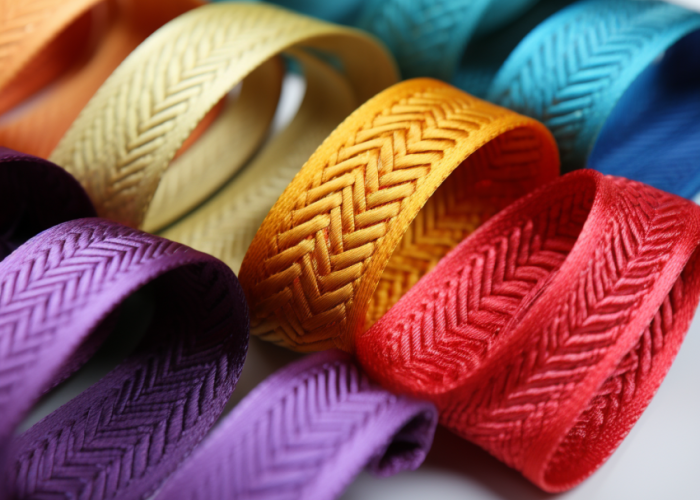

Webbing manufacturing expert with 15+ years of experience helping product developers build high-performance straps for industrial, medical, and outdoor use.
Jacquard elastic webbing is suitable for outdoor use because of four key advantages: durability, weather resistance, aesthetic appeal, and elasticity. Synthetic jacquard webbing made from polyester or nylon is highly durable and resistant to wear and tear, making it appropriate for outdoor use where materials face constant environmental stress.
The durability advantage comes from synthetic materials like polyester or nylon which provide exceptional structural integrity compared to natural fibers. These engineered materials retain their strength and resilience even after extended exposure to typical outdoor conditions including temperature fluctuations and mechanical stress from regular use.
Weather resistance represents another crucial benefit. Quality jacquard elastic webbing demonstrates excellent resistance to UV rays, moisture, and mildew. These properties are particularly important for outdoor applications where exposure to sunlight and precipitation is inevitable. Nylon and polyester webbing offer superior strength and flexibility compared to natural fibers, which typically degrade rapidly when exposed to outdoor elements.
From a design perspective, jacquard elastic webbing adds decorative visual interest to outdoor furniture pieces. The intricate patterns created through the jacquard weaving process enhance the aesthetic appeal of furniture, creating a stylish and customized appearance that distinguishes the final product from mass-produced alternatives.
The stretchable nature of elastic jacquard webbing provides additional comfort in applications requiring body contact, such as seating surfaces. This elasticity creates a more ergonomic and comfortable user experience while maintaining necessary support.
The best materials for durable outdoor jacquard elastic webbing are polyester and UV-treated nylon, which provide superior weather resistance and durability. Synthetic fibers demonstrate dramatically enhanced moisture resistance and UV stability compared to natural fibers like cotton, which deteriorate rapidly in outdoor conditions.
Polyester represents an excellent choice for outdoor webbing applications due to its exceptional weather resistance and durability. Unlike natural fibers, polyester maintains structural integrity even after prolonged exposure to moisture and UV radiation. Its molecular structure resists degradation from environmental factors, resulting in a longer functional lifespan for outdoor furniture applications.
UV-treated nylon offers another premium option for outdoor webbing. With specialized UV stabilizers incorporated during manufacturing, treated nylon delivers enhanced resistance to solar degradation that would otherwise weaken the fibers. This treatment extends the material’s useful life significantly compared to untreated alternatives.
For areas requiring additional structural support, combining elastic jacquard webbing with more rigid materials like polypropylene provides optimal performance. This hybrid approach leverages the comfort and aesthetics of jacquard patterns while enhancing the load-bearing capabilities necessary for heavy-duty outdoor furniture applications.
By incorporating these treatments and selecting appropriate materials, jacquard elastic webbing can be optimized for long-lasting outdoor applications such as terrace seating, poolside furniture, and garden swings.
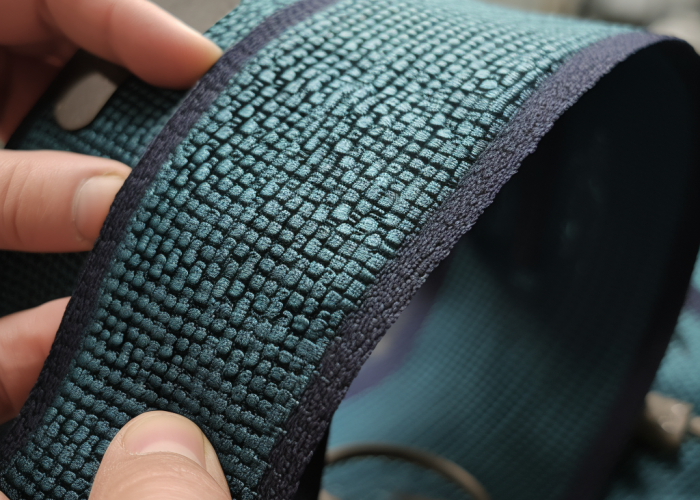
Weather affects jacquard elastic webbing performance through three primary environmental factors: UV radiation, moisture exposure, and temperature fluctuations. Understanding these impacts is essential for selecting appropriate webbing materials and treatments for specific outdoor conditions and geographic locations.
UV radiation represents the most significant threat to webbing durability. Prolonged sunlight exposure can degrade the molecular structure of webbing fibers, particularly natural materials like cotton. This degradation manifests as fading, brittleness, and eventually structural failure. Synthetic materials like polyester and UV-treated nylon provide substantially greater resistance to these effects, maintaining their integrity and appearance significantly longer than untreated alternatives.
Moisture exposure presents another critical challenge for outdoor webbing. When webbing absorbs moisture, it becomes vulnerable to mildew growth, rot, and dimensional changes that affect performance. Synthetic fibers naturally resist moisture absorption better than natural materials, with polyester demonstrating particularly excellent water-repellent properties. This resistance helps maintain consistent performance in humid or rainy environments.
Temperature fluctuations also impact webbing performance, particularly regarding elasticity. Extreme heat can temporarily increase elastic properties, while cold conditions may cause stiffening and reduced flexibility. Quality synthetic webbing maintains more consistent performance across temperature ranges compared to natural fiber alternatives, which tend to exhibit more dramatic property changes with temperature variations.
UV resistance treatments that extend jacquard webbing lifespan include UV inhibitors and stabilizers during manufacture and specialized protective coatings applied post-production. Prolonged exposure to sunlight can degrade elastic fibers, causing them to stiffen and deteriorate over time without proper treatment.
UV inhibitors work by absorbing harmful ultraviolet radiation and converting it to heat, which disperses safely without damaging the webbing structure. Manufacturers can apply UV stabilizers during production to provide integral protection that extends throughout the fiber. This approach creates comprehensive protection that maintains the webbing’s flexibility and strength despite continuous sun exposure.
For additional protection, specialized UV-resistant coatings can be applied to the webbing surface. These treatments create a protective barrier that filters damaging UV radiation before it reaches the underlying fibers. Polyurethane and polyester are particularly effective materials due to their inherent resistance to moisture and UV degradation, making them significantly more durable than natural fibers in outdoor settings.
The effectiveness of UV treatments depends on proper application and periodic maintenance. Even with high-quality treatments, extremely harsh environments may require occasional reapplication of protective coatings to maintain optimal performance over extended periods.
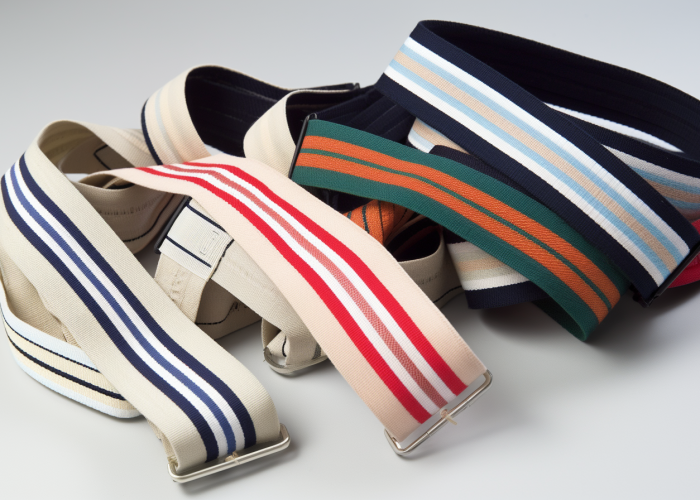
Water-resistant coatings protect elastic webbing by preventing moisture absorption that leads to mildew growth, freeze damage, or accelerated deterioration in wet conditions. Hydrophobic coatings or treatments create a moisture barrier while maintaining the webbing’s essential flexibility and stretch properties.
Moisture represents a significant threat to webbing integrity in outdoor settings. When untreated webbing absorbs water, it becomes susceptible to microbial growth, dimensional changes, and accelerated breakdown of the fiber structure. This is particularly problematic in humid climates or areas with frequent precipitation.
Silicone-based treatments provide excellent water repellency without affecting the webbing’s stretch characteristics. These coatings create a microscopic barrier that allows the webbing to maintain its mechanical properties while preventing water molecules from penetrating the fiber structure. Fluoropolymer and polysiloxane treatments offer similar benefits with enhanced durability in challenging environments.
The most effective water-resistant treatments maintain their protective properties through repeated stretching and compression cycles. This durability ensures consistent performance even as the furniture experiences regular use and mechanical stress, extending the functional lifespan of the webbing significantly compared to untreated alternatives.
Antimicrobial treatments prevent mold growth on outdoor webbing by inhibiting microbial proliferation in humid environments. Outdoor conditions frequently promote mold and mildew development, especially in warm climates where these organisms thrive.
Antimicrobial coatings offer a protective solution by creating an inhospitable surface environment for microorganisms. These specialized formulations contain active ingredients that disrupt cellular functions in mold, mildew, and bacteria, preventing colonization and growth on the webbing surface. The result is maintained visual appearance and structural integrity even in challenging environmental conditions.
The most effective antimicrobial treatments bond directly to the fiber structure rather than simply coating the surface. This integration ensures long-lasting protection that withstands cleaning and regular use without diminishing effectiveness. Some advanced formulations combine antimicrobial properties with UV protection for comprehensive environmental defense in outdoor applications.
Regular maintenance enhances the performance of antimicrobial treatments. While these coatings significantly reduce microbial growth, periodic cleaning with mild detergent remains important to remove accumulated dirt that could potentially support biological activity despite the treatment.
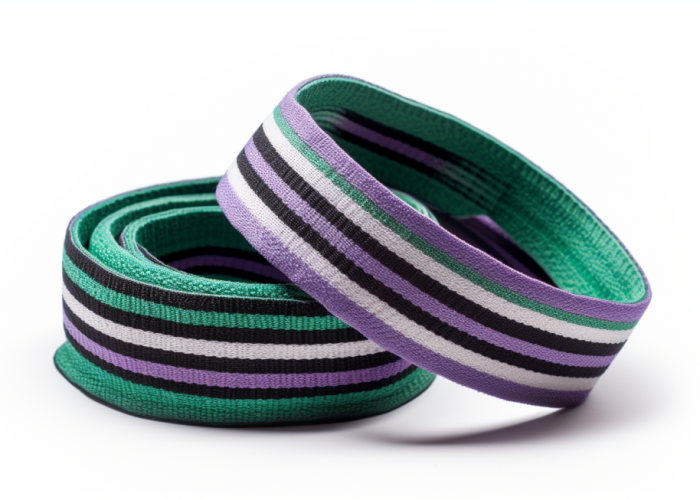
Temperature significantly affects jacquard elastic webbing performance by altering the material’s tensile strength and elasticity. Polymer-based jacquard webbing is known for its wide temperature tolerance from -40°F to 200°F, making it suitable for outdoor environments with significant seasonal variations.
At lower temperatures, elastic webbing typically becomes more rigid and less flexible. This reduced elasticity can affect comfort in seating applications and potentially impact the webbing’s resistance to mechanical stress. Conversely, higher temperatures generally increase flexibility but may reduce overall tensile strength if the material approaches its thermal limits.
The composition of the webbing plays a critical role in temperature performance. Polyester tends to maintain more consistent properties across temperature ranges compared to other materials. This stability makes it particularly valuable for applications in locations with extreme temperature variations between seasons.
For environments with exceptional temperature challenges, specialized formulations incorporate additives that enhance performance at temperature extremes. These modifications help maintain consistent elasticity and support properties regardless of seasonal changes, ensuring reliable performance throughout the year.
Load capacity limitations of jacquard elastic webbing depend primarily on the material composition, with polyester or polypropylene providing the strongest support for heavy-duty outdoor furniture. While decorative and comfortable, elastic webbing typically offers less structural support than non-elastic alternatives designed specifically for maximum load-bearing capabilities.
The webbing’s width, thickness, and weave pattern significantly influence its load-bearing capacity. Wider webbing distributes weight across a larger surface area, increasing overall support strength. Similarly, denser weaves with higher thread counts generally provide enhanced structural integrity compared to looser patterns, though this may somewhat reduce the elastic properties.
For applications requiring substantial support, manufacturers often recommend combining elastic jacquard webbing with more rigid materials. This hybrid approach maintains the comfort and aesthetic benefits of decorative elastic webbing while providing the necessary structural reinforcement for heavier loads or high-traffic usage scenarios.
When properly selected and installed, quality synthetic jacquard elastic webbing can effectively support typical outdoor furniture applications. However, for specialized heavy-duty settings, consulting with webbing manufacturers regarding specific load requirements ensures appropriate material selection for optimal performance and longevity.
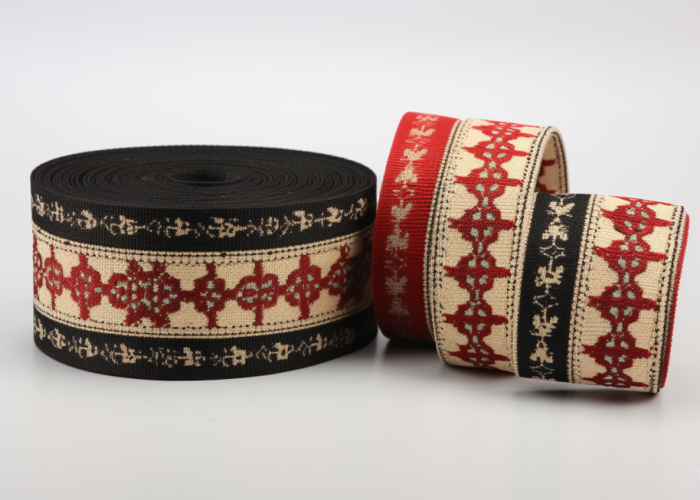
Synthetic jacquard elastic webbing provides a durable, weather-resistant, and aesthetically pleasing solution for outdoor furniture when properly selected and treated. By choosing polyester or UV-treated nylon webbing with appropriate protective treatments, we can create comfortable, stylish outdoor furniture that withstands environmental challenges while maintaining visual appeal.
The best finishes for enhancing jacquard elastic webbing durability include UV stabilizers, fluoropolymer water-repellent coatings, silicone treatments, and anti-microbial protectants. These specialized finishes work together to combat the primary environmental factors—UV radiation, moisture, and microbial growth—that degrade outdoor webbing.
Synthetic jacquard elastic webbing performs excellently in varying weather conditions when properly treated. Polyester maintains consistent performance across temperature ranges (-40°F to 200°F), resists UV degradation by up to 85% compared to untreated webbing, and demonstrates minimal moisture absorption even during prolonged rain exposure.
The best materials to pair with jacquard elastic webbing are rigid polypropylene or polyethylene supports for areas requiring additional structural strength. This combination provides the perfect balance of comfort from elastic webbing while ensuring sufficient durability and load capacity for heavy-duty outdoor applications.
Yes, jacquard elastic webbing can be used for both upholstery and straps in outdoor furniture when made from synthetic materials like polyester or nylon. For upholstery applications, wider webbing (2″+) provides comfortable seating surfaces, while narrower, reinforced webbing (1-1.5″) works effectively for supportive straps.
Maintenance for outdoor jacquard elastic webbing requires regular cleaning with mild detergent and avoiding harsh chemicals or pressure washing. Periodic inspection for wear, prompt removal of organic debris that can harbor mildew, and occasional reapplication of protective treatments will maximize lifespan in outdoor environments.
Fiber type significantly impacts outdoor durability, with polyester offering superior UV resistance and minimal moisture absorption, while treated nylon provides excellent strength and temperature stability. Natural fibers like cotton deteriorate rapidly outdoors, losing approximately 60% of their strength after three months of exposure to weather conditions.